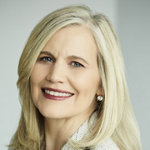
JPMorgan Chase & Co
NYSE:JPM

JPMorgan Chase & Co





In the bustling world of global finance, JPMorgan Chase & Co. stands as an emblem of dynamism and history, tracing its roots back to the 19th century. As one of the largest financial institutions in the world, it orchestrates a symphony of financial services under the leadership of its astute management team. The firm effortlessly combines its historical prowess with cutting-edge technology to serve millions of clients worldwide. Its main pillars of operations—consumer and community banking, corporate and investment banking, commercial banking, and asset and wealth management—operate in harmony to create a cohesive structure that underpins its formidable market presence.
At the core of JPMorgan's profitability lies its ability to seamlessly integrate these diverse segments. In consumer and community banking, it garners revenue through interest from loans and mortgages, while collecting fees from a myriad of banking services. Its corporate and investment banking arm is where high-stakes financial theatrics unfold, generating earnings through advisory fees, trading operations, and underwriting services. The commercial banking division caters to the intricacies of business needs, offering tailored lending and treasury services. Simultaneously, the asset and wealth management segment ensures the firm remains an indispensable guardian of clients’ financial futures, earning fees from its suite of investment products and advisory services. In this multifaceted dance of finance, JPMorgan Chase expertly navigates markets, balancing risk and reward to maintain its stature in the world of modern banking.
Earnings Calls
In the fourth quarter, Johnson Controls reported a robust 10% organic revenue growth and a 260 basis points increase in segment margin to 18.6%. Annual adjusted EPS rose 22% to $1.28, exceeding guidance. The company expects 2025 adjusted EPS of $3.40 to $3.50. A record backlog of $13.1 billion reflects strong demand in verticals like data centers. For Q1 2025, organic sales growth is projected in the mid-single digits, with expected margin expansion of over 100 basis points. Additionally, a restructuring plan aims to generate $500 million in annual savings over three years, enhancing operational efficiency.
Management

James Dimon, widely recognized as Jamie Dimon, is an influential American business executive serving as the Chairman and Chief Executive Officer of JPMorgan Chase & Co., one of the largest and most prestigious banking institutions in the world. Born on March 13, 1956, in New York City, Dimon has become one of the prominent figures in the financial industry. Dimon comes from a family with a rich banking tradition; his grandfather was a Greek immigrant and a stockbroker at Shearson, and his father worked as an executive vice president at American Express. Jamie Dimon attended Tufts University, earning a degree in psychology and economics, and later graduated from Harvard Business School with a Master of Business Administration. Starting his career as an assistant to Sandy Weill at American Express, Dimon established a close professional relationship with Weill that lasted for many years. He played a significant role in the mergers that formed Citigroup. In 2000, Dimon took over as CEO of Bank One Corporation, and when JPMorgan Chase purchased Bank One in 2004, he became President and Chief Operating Officer of the combined company. In 2005, Dimon was appointed CEO, and in 2006 he became the Chairman of the Board of JPMorgan Chase. Under his leadership, the bank navigated the 2008 financial crisis with far less damage than many of its competitors and subsequently emerged as a stronger entity. Dimon's strategic acumen, financial expertise, and leadership qualities have been credited with the bank's resilience and growth. Despite his successes, Dimon has faced various challenges, including regulatory scrutiny and legal issues. He is also known for his outspoken views on economic policy and regulatory frameworks. Nonetheless, his leadership continues to be widely respected in the financial sector, making him a prominent figure in global banking.

Daniel Eduardo Pinto serves as the Co-President and Chief Operating Officer of JPMorgan Chase & Co. and is the CEO of the Corporate & Investment Bank (CIB) division. Born in Argentina, he embarked on a noteworthy career journey, joining J.P. Morgan in 1983 and climbing through the ranks due to his impressive expertise in financial markets. Pinto has played a critical role in overseeing and steering the investment banking operations at JPMorgan, globally recognized for its leadership in investment banking, financial and derivatives trading, and securities services. His strategic vision has been pivotal in JPMorgan's continued growth and development, adapting to changes in the financial landscape while maintaining a strong competitive edge. He is known for his deep understanding of the financial markets and his ability to navigate complex global economic environments. Pinto's leadership is characterized by a pragmatic approach to risk management and innovation within the banking sector. Being an influential figure in global banking, his decisions and insights are closely watched by industry peers and analysts alike.

Jeremy Barnum is an executive at JPMorgan Chase & Co., where he holds the position of Chief Financial Officer (CFO). In this role, he is responsible for overseeing the financial operations of the company, which includes managing the firm's financial strategy, accounting, tax, and investor relations. As CFO, Barnum plays a critical role in steering the financial direction of JPMorgan Chase, ensuring its financial health and compliance with regulatory requirements. Before becoming CFO, Jeremy Barnum served in various roles within the company, which he joined in the early 2000s. His experience encompasses a wide range of functions, such as risk management, trading, and treasury and chief investment office operations. Prior to his current role, he held the position of Head of Global Research for JPMorgan's Corporate & Investment Bank, providing him with extensive experience in the financial industry. Barnum holds a strong academic background and has contributed to JPMorgan Chase's strategic initiatives and financial planning processes, supporting the firm's growth and adaptation in the ever-evolving banking landscape. His leadership and expertise have been instrumental in maintaining JPMorgan's position as one of the top financial institutions in the world.

Mary Callahan Erdoes is a prominent figure in the financial industry, serving as the Chief Executive Officer of J.P. Morgan Asset & Wealth Management, a division of JPMorgan Chase & Co. Mary has been with the company for a significant part of her career, joining in 1996, and has risen through the ranks due to her exceptional leadership and expertise in asset and wealth management. Born in 1967 in Chicago, Illinois, she graduated from Harvard Business School with a Master of Business Administration degree and earned a bachelor's degree in mathematics from Georgetown University. Her educational background laid a strong foundation for her career in finance. Under Mary Callahan Erdoes's leadership, J.P. Morgan Asset & Wealth Management has consistently been recognized as one of the largest and most respected investment and wealth management entities worldwide. She has played a crucial role in expanding the firm's global presence and enhancing its service offerings to meet the diverse needs of its clients. Known for her strategic vision and commitment to innovation, Erdoes sits on several influential boards and committees within the industry. Her contributions have not only been instrumental in the firm's success but also in advancing the role of women in finance, as she is a staunch advocate for diversity and inclusion. Mary is well-respected within both her company and the broader financial community for her insightful perspectives on market trends and investment strategies, making her one of the most influential women in finance today.

Marianne Lake is a prominent finance executive known for her significant contributions at JPMorgan Chase & Co. She served as the Chief Financial Officer (CFO) of JPMorgan Chase from 2013 to 2019, making her one of the most powerful women in the banking sector. During her tenure as CFO, Lake was responsible for overseeing the financial operations of the company, providing strategic financial insights, and communicating with investors and analysts. Born in the United Kingdom, Lake holds a degree in physics from the University of Reading. She began her career at PricewaterhouseCoopers, where she gained extensive experience in the banking and capital markets sector. Her journey with JPMorgan Chase started in 1999, and since then, she has held various senior positions within the company, including roles in investor relations and finance. In 2019, Marianne Lake transitioned to the role of CEO of Consumer Lending at JPMorgan Chase, which includes oversight of the home lending, auto finance, and card services businesses. Her leadership in these areas focused on enhancing customer experiences and leveraging technology to drive growth and efficiency. Lake is highly regarded for her analytical acumen, operational expertise, and leadership skills. She has often been mentioned as a potential future CEO of JPMorgan Chase, reflecting her stature within the organization. Her career serves as an inspiration for many in the financial industry, particularly for women aiming to reach high-level executive positions.

Jennifer A. Piepszak is a prominent executive at JPMorgan Chase & Co., one of the largest and most influential financial institutions in the world. She has held various significant roles within the company, showcasing her expertise and leadership in the financial sector. Jennifer Piepszak began her career at JPMorgan Chase over two decades ago and quickly rose through the ranks due to her strong analytical skills and strategic mindset. She has served in several senior positions across different divisions of the bank, gaining comprehensive experience in financial operations and management. One of her most notable roles was serving as the Chief Financial Officer (CFO) of JPMorgan Chase, a position she took on in 2019. As CFO, Piepszak was responsible for overseeing the firm's financial activities, including budgeting, forecasting, financial planning, and analysis. She played a crucial role in guiding the company's financial strategy and ensuring its fiscal health. Before becoming CFO, she was the CEO of the company's Card Services division, where she managed one of the largest credit card portfolios in the world. Her leadership helped in expanding the business and strengthening its position in the marketplace. Her exceptional leadership and deep understanding of the financial industry have earned her a reputation as a respected and influential figure within the banking sector. Piepszak's contributions to JPMorgan Chase have been instrumental in shaping its strategic direction and maintaining its position as a leader in the global financial industry.


As of the latest available information, Sripada Shivananda serves as a prominent executive at JPMorgan Chase & Co. Known for his leadership in the technology and financial sectors, Shivananda holds a significant position, with responsibilities likely focused on technological advancements, strategic technological initiatives, and innovation within the bank. Prior to his role at JPMorgan Chase & Co., he had a distinguished tenure at PayPal, where he contributed extensively to the company's technology strategies and development. During his career, Shivananda has been recognized for his ability to integrate technology with financial services, enhancing both operational efficiencies and customer experiences. His expertise spans areas such as product development, IT strategy, and digital transformation. Through his leadership, Shivananda continues to influence the direction of technological growth and adaptation at JPMorgan Chase & Co., contributing to its position as a leader in the financial industry. Note: Please verify this information from current resources as roles and responsibilities may have changed.

Lori Ann Beer is a seasoned technology executive known for her leadership at JPMorgan Chase & Co., where she serves as the Global Chief Information Officer (CIO). In this role, she is responsible for the firm's technology systems and infrastructure, managing over 50,000 technologists and a significant technology budget. Lori Beer focuses on driving innovation and digital transformation across the organization, ensuring the bank's technology infrastructure supports its business needs and customer demands. She joined JPMorgan Chase in 2014 and initially served as the Chief Information Officer for the Corporate & Investment Bank. Before her tenure at JPMorgan Chase, Beer held leadership positions at various companies, including WellPoint, Inc. (now Anthem, Inc.), where she served as the Executive Vice President of Specialty Businesses and Information Technology. Lori Beer is recognized for her efforts in advancing the firm's technological capabilities, embracing emerging technologies, and fostering a culture of innovation. She holds a Bachelor’s degree in Computer Science from the University of Dayton and is actively involved in initiatives to support women in technology.


















































 You don't have any saved screeners yet
You don't have any saved screeners yet

Good morning, and welcome to the Johnson Controls Fourth Quarter 2024 Earnings Conference Call. [Operator Instructions] Please note that today's event is being recorded. I would now like to turn the conference over to Jim Lucas, Vice President, Investor Relations. Please go ahead.
Good morning, and thank you for joining our conference call to discuss Johnson Controls' fiscal fourth quarter 2024 results. The press release and related tables that were issued earlier this morning as well as the conference call slide presentation can be found on the Investor Relations portion of our website at johnsoncontrols.com. Joining me on the call today are Johnson Controls' Chairman and Chief Executive Officer, George Oliver; and Chief Financial Officer, Marc Vandiepenbeeck.
Before we begin, let me remind you that during our presentation today, we will make forward-looking statements. Actual results may differ materially from those indicated by forward-looking statements due to a variety of risks and uncertainties. Please refer to our SEC filings for a detailed discussion of these risks and uncertainties in addition to the inherent limitations of such forward-looking statements.
We will also reference certain non-GAAP measures. Reconciliations of these non-GAAP measures to the most directly comparable GAAP measures are contained in the schedule attached to our press release and in the appendix to this presentation, both of which can be found on the Investor Relations section of Johnson Controls website.
I will now turn the call over to George.
Thanks, Jim, and good morning, everyone. Thank you for joining us on the call today. I would like to start today's call by taking a moment to acknowledge and thank all of our employees for their contributions in delivering strong quarterly results.
We also made significant progress in our transformation to simplify our portfolio and become a pure-play provider of comprehensive solutions for commercial buildings. Today, we are a faster-growing, more profitable, simpler company.
Let's begin with Slide 4. We ended fiscal 2024 with momentum, delivering double-digit organic revenue growth, robust margin expansion and 96% adjusted free cash flow conversion. Order growth of 7% in the year was led by data center demand and contributed to our record backlog, which ended the year at $13.1 billion.
Our differentiated solutions to enhance efficiency and sustainability in commercial buildings continue to resonate with our customers across the key verticals we serve. For example, we extended our leading position in cooling for data centers with orders for the full year more than doubling the sales we delivered. In fact, we are now seeing key customers placing multiyear orders in the hundreds of millions of dollars to provide cooling solutions. Our pending sale of the residential and light commercial business to Bosch is progressing, and we expect the transaction to close in the fiscal fourth quarter.
Today, we are introducing our fiscal 2025 guidance from continuing operations of $3.40 to $3.50, which Marc will give more details on later in the call. We believe we are well positioned going forward to deliver long-term shareholder value. Our business transformation is almost complete, and we are benefiting from more consistent, predictable performance.
Slide 5 presents a pro forma look at the new Johnson Controls, representing the composition of our company going forward. Today, Johnson Controls is a leader in building solutions, dedicated to solving our customers' needs for energy efficiency and clean electrification. Our innovative approach and commitment to sustainability are driving us forward, ensuring we provide cutting-edge solutions that meet the evolving demands of the market.
Johnson Controls' unique customer value proposition directly translates to shareholder value creation. Our multi-domain presence enables us to serve our customers over the building life cycle while also delivering safe, healthy and sustainable solutions. This means we can meet the needs of our customers all over the world and deliver cost savings and efficiencies for them.
We are confident we are well positioned with the integrated domain expertise in an extensive branch network to deliver greater value to our customers. In turn, we believe this will lead to sustained top line growth and significant margin expansion.
As part of our path towards simplification, we have now deployed one end-to-end operating model that we leverage globally across all of our key verticals. This is positioning us with a unique capability in serving buildings and leveraging our digital expertise to expand our connected services model.
We are improving productivity on behalf of our customers, helping them maximize outcomes for their buildings. Whether it is the fast-growing data centers, expansion of campus housing and labs in higher education or solving needs across health care from hospitals to outpatient facilities, we deliver engineered solutions across all of our key verticals. This enables us to realize the benefits of this model over the life cycle of our solutions, ensuring sustained value creation.
Johnson Controls is better positioned than ever before to help customers create safer, more sustainable buildings while also maximizing the occupant experience. Our strong finish to fiscal 2024, coupled with our record backlog, reinforces our confidence that Johnson Controls will continue to lead globally in building solutions.
With that, I'll turn it over to Marc.
Thanks, George, and good morning, everyone. Please turn to Slide 6. Our performance in the fourth quarter highlights continued strong execution across the portfolio. Our single end-to-end operating model provides the visibility needed to drive consistent and predictable results. This was evident in our performance in the quarter as organic revenue grew 10% and segment margin expanded a robust 260 basis points to 18.6%, led by substantial improvement in both EMEA/LA and Global Products.
We delivered another strong quarter of increased productivity while converting our higher-margin backlog. Adjusted EPS of $1.28 was up 22% year-over-year and exceeded the high end of our guidance range by $0.02. Our operational efficiency contributed to the majority of the growth and more than offset additional corporate expenditure primarily related to IT investments. The strategic allocation of resources ensures we are well equipped to support our growth and safeguard infrastructure.
Below the line, net finance charges were higher, while EP has benefited from a lower share count. Overall, we achieved significant EPS growth, and we are pleased with these results.
On the balance sheet, we ended the fourth quarter with approximately $600 million in available cash, and net debt decreased to 2x, which is the lower end of our long-term target of 2 to 2.5x. Our adjusted free cash flow conversion of 96% was a strong improvement year-over-year and substantially exceeded our previous commitments. This trend is reflecting of our improved fundamental in working capital management.
Adjusted free cash flow of $2.4 billion improved nearly $800 million year-over-year. For the full year, we returned $2.2 billion to shareholders via dividends and share repurchases.
Let's now discuss our segment results in more detail on Slides 7 through 9. Beginning on Slide 7, our Global Products business had a strong finish to the year. Organic sales grew 8% as price remained positive, and we delivered 5 points of volume growth.
Low double-digit growth in HVAC, both commercial and residential, offset declines in Fire & Security and Industrial Refrigeration. Strength was broad-based across the region, led by double-digit growth in North America. Adjusted segment EBITDA margin expanded [indiscernible] 700 basis points to 28%. We have made tremendous progress over the past year in improving our operational efficiencies, leading to substantial margin improvement experienced in the fiscal second half.
Turning to Slide 8 and 9 to discuss our Building Solutions performance. Building Solutions delivered a solid performance this quarter, underpinned by sustainable momentum, double-digit revenue growth and margin expansion.
Additionally, we increased our record backlog, which remains at historical levels and underscore the strength of our business model. Our outcome-driven solution offering continues to resonate with our customers across many of the attractive vertical we serve with strong growth in data center, government, health care and higher ed.
Orders grew 8% in the quarter, led by mid-teens Service growth, while System order grew 5% against a tough double-digit comparison. Orders in North America increased 7% in the quarter with low teen growth in Service led by strength in Fire & Security. System orders grew 3% against a tough comp.
In EMEA/LA, orders were up 14% with over 20% growth in Service, while System order grew 9%. Across the portfolio, we saw strong double-digit growth in HVAC controls and Industrial Refrigeration.
In Asia Pacific, momentum is building as orders rebounded from the past few quarters of decline. Overall, order grew 6%, led by 9% growth in Service.
Our pipeline of opportunities within Building Solutions remain healthy as we continue to build on the momentum of the past several quarters. Our Building Solutions segment entered the quarter with a record backlog, which provided a solid foundation, enabling us to capitalize on high demand for solutions and services.
Organic sales increased 11%, led by double-digit growth across both Systems and Service. Our sustained Service growth sets us apart as we continue to deliver differentiated [indiscernible] cycle solution for our customers.
Sales in North America were up 16% organically with continued strength across HVAC and controls. In EMEA/LA, organic sales grew 10% with double-digit growth in Controls, Security and Industrial Refrigeration.
In Asia Pacific, while sales declined 5%, we saw sequential improvement. This improvement was driven by a stronger backlog in our resilient Service business. The margin profile within our Building Solutions segment continues to strengthen due to the enhanced productivity, favorable service mix and the improved operational efficiencies while executing our higher-margin backlog.
By region, EMEA/LA adjusted segment EBITDA margin expanded 370 basis points to 11.5%, driven by improved productivity and the positive mix from growth in Service. In APAC, adjusted margin expanded 70 basis points to 14.2% as positive mix on our Service business offset a decline in Systems business. In North America, adjusted segment margin declined 40 basis points to 15% related to mix as Systems grew faster than Service. Building Solutions backlog remained at a record level, growing 7% to $13.1 billion. Service backlog grew 12%, and System backlog grew 6% year-over-year.
Let's discuss our first quarter and fiscal 2025 guidance and the impact of discontinued operation on Slide 10 and 11. We are entering fiscal 2025 with momentum, and our record backlog offers great visibility into the new year. Our Service business remains well positioned and provide favorable mix to margins.
As we look to our guidance for fiscal 2025, we will be presenting both the first quarter and the full year on a continuing operations basis. After moving the residential and light commercial business to discontinued operation, our fiscal 2024 continuing operation adjusted EPS is $3.21 per share.
For the first quarter, we anticipate organic sales growth of mid-single digits, adjusted segment [indiscernible] margin expansion of over 100 basis points to approximately 14.5% and adjusted EPS in the range of $0.57 to $0.60, representing 24% to 30% growth. While the first quarter is against an easy comparison, the overall fundamentals are strong entering the year.
For the full year, we expect organic sales growth of mid-single digits, which is consistent with our long-term growth algorithm. Adjusted segment [indiscernible] margins are expected to expand over 50 basis points. Our adjusted EPS range of $3.40 to $3.50 per share represents 6% to 9% growth.
We expect free cash flow conversion of 85% or greater, consistent with the performance of fiscal 2024 on a continuing operations basis. We continue to target returning 100% of our free cash flow to shareholders through dividends and share repurchases.
We expect the residential and light commercial divestiture to close during the fiscal fourth quarter. Consequently, we have not included any capital deployment from sales proceeds in our fiscal 2025 outlook.
Additionally, we are committing to a multiyear restructuring plan to address stranded costs and further rightsize our global operations, following our previously announced portfolio simplification actions. We anticipate incurring roughly $400 million in expenses over the next 3 years, resulting in expected annual cost savings of approximately $500 million.
Similar to the timing of deploying capital from the closure of the residential and light commercial divestiture, many aspects of this restructuring plan will depend on the timing of the close of the transaction. We are confident this factor will drive sustained success and create long-term value to our stakeholders.
While fiscal 2024 was a year of significant portfolio transformation, we are better positioned as a faster-growing, more profitable, simplified company. We look forward to updating you on our progress as we continue our strong momentum entering fiscal year '25.
With that, operator, please open the lines for questions.
[Operator Instructions] And today's first question comes from Nigel Coe with Wolfe Research.
Sorry, I have the mute button there. So the -- I think, Marc, there's a question for you, the mid-single digits, how do you see that across the segments? I'm assuming APAC probably is a bit above that. So just curious how you see missing [indiscernible] across the segments? And any color on the 50 bps again across segments?
And I just want to verify, obviously, the restatements are happening within Global Products. And it looks like the clean EBITA margins in '23, '24 were 25.7% and 27.1% ex the [indiscernible] and York. So I just want to make sure those are the right numbers.
Nigel, a lot to cover there. So first on growth, we had a very strong growth quarter and very happy with the results. But we're entering the new year with a record backlog of about $13.1 billion. And I think we continue to target that full mid-single digits. Granted, we have a lot of confidence given the level of backlog we are -- as you know, the timing of some of the larger projects can impact quarter-over-quarter growth rate. And I think we are seeing some very strong tailwinds in the core vertical.
Now if you think by segment, how that growth rate in mid-single digit is going to break down, we think APAC is going to be slightly above that overall guide for the enterprise really on an easier compare. And as we showed in the fourth quarter, we're starting to see sequential order growth for that business. And the rest of the business is North America, EMEA/LA, our Global Products will be at or just slightly below that overall guide throughout the year.
Now when it comes to margin, and I hear you both on the total margin and the continued operation basis, Global Products margin, what we covered in the last quarter when we gave guidance for Q4 is with the base cost and how we dealt with that base cost within that business and a lot of the disruption from a supply chain standpoint being behind us, a little bit of volume was going to go a long way, and you saw that in Q4. And I think that's going to remain true as we enter fiscal year '25.
We've been driving significant operational efficiency that are structural and fundamental across both the manufacturing base and the supply chain. And you can see that, that Global Products business has benefited. And we continue to see benefit from an improved absorption, and that leverage will continue to provide easier comps year-on-year.
Now that business has some seasonality to it. So the first part of the year will be a little bit softer than the second part of the year. But that margin, we feel, is very well set for fiscal year '25.
And just want to make sure I've got the [indiscernible] for the Global Products margins in fiscal '23, '24. So any help there would be good. But I'm just wondering, George, maybe if you could comment on the CEO succession. What progress has been made identifying the right person to replace you when you retire?
We understand there is significant interest in the ongoing CEO succession process. At this time, we don't have any new updates to share. You can be rest assured that the Board is actively considering an impressive list of candidates, both internal and external. And we do expect to have an update in the first half of calendar 2025.
And today's next question comes from Steve Tusa with JPMorgan.
Sorry, just wanted to better understand that, the first quarter. I'm not quite sure if the guide you just gave was for the year or the first quarter, but I mean with orders trending up 8 with your organic being so strong this quarter and the comp not looking particularly hard, what is the reason why first quarter is only up mid-singles inorganic specifically?
Yes. So if you think about the timing of some of those larger orders and particularly the big vehicles that we are benefiting from, whether it's large decarbonization projects or the data center project, we had very strong performance in the fourth quarter in those particular verticals. And that quarter being the busiest season for our Service business, we also had very strong performance there with double digits Service growth.
While that's probably sustainable over the long term, there are some quarter-to-quarter volatility to that. And so a mid-single-digit growth for Q1, granted on an easier compare versus last year, is where we feel comfortable really coming [indiscernible] places here.
North America will see some strong performance probably a little bit higher than that mid-single digit. But both EMEA/LA and APAC as well as Global Products will be right in line with that mid-single-digit or slightly lower. And I think that's where we feel comfortable where the growth going to come next quarter.
Okay. And then can we just get for the refresh portfolio, what percentage of revenue now is data center that you expect in '25?
Consistent with what we've said prior, give or take a little bit, our data center exposure's about [indiscernible] of our revenue and continues to grow faster than the rest of the portfolio with very solid double-digit growth sequentially at least for the foreseeable future.
Our next question comes from Scott Davis with Melius Research.
I -- when you get a big data center order and you do an install, does it typically come with a similar kind of attachment service attachment rate and OpenBlue that you would have in the building? Or is it -- is there a different kind of attachment rate there?
Yes. Good question, Scott. The service overall is slightly better than our portfolio from an attach rate standpoint. The digital services really depends on the type of customer. That particular vertical is very sensitive to digital solution and very cautious about how they deploy it.
There are some customers that have a little bit more cutting edge than other expecting to have full connections. Some others would like to manage that on their own. But the service attach rate for that business is very, very strong and better than the rest of the portfolio.
And it's changed a lot, I'll tell you, over the last probably 5 or 6 years, where that vertical probably 5 or 6 years ago was not very high service attach where a lot of those key customers have taken the view that they wanted to self-serve some of that. I think what they've learned with the complexity and also the quality of our capabilities, we are really able to differentiate ourselves and provide a full suite of service with guaranteed outcomes for those customers.
And Scott, what I would tell you, the short term, the trend is significantly up because as you look at these data center sites, we have hundreds of units deployed on these sites. And we have dozens of our technicians that are supporting these operations.
And we've made the case that when we have connectivity, number one is not only are we more efficient in how we serve them, but we can be very proactive in making sure we're maintaining the overall operation. So the trend is actually significantly up because of that.
That's helpful, guys. And just now that you've had another quarter of seeing big orders come through and such, how would you compare kind of the pricing power in that vertical to the traditional building segment? Is it a little bit better because it's more complex? Or is it more comparable because honestly, everything in applied isn't that easy.
Well, there's some parts of applied that are slightly commoditized, but most of applied is engineered solutions that require kind of a strong partnership with the customer and allows us to deliver value to the customer and drive good pricing. The way we've approached the data center vertical is we've really embedded our engineering [indiscernible] with those customers to try and solve really higher the value chain the problems they're trying to solve for when it comes to heating, cooling as well as the way they control and the fire and security of their building.
So across the board, if you compare probably the margin of those particular vertical businesses vis-a-vis the rest of the market is probably slightly more than what you see. Now it's going to continue to evolve as a market over the next few months and years.
We've developed differentiated solution from our peers that allows us to command a little bit more price. And we're expecting that to continue to drive a better margin profile than the more traditional applied equipment business.
And I would add to that also on the product side, we've been ahead of the curve with our reinvestment in product. And so as we've been differentiating our product and gaining a position for the next generation of data centers, I believe that we're positioned extremely well with that value proposition. So we believe that the margin profile that we've been able to achieve with what we've done to date is going to continue to improve going forward.
And today's next question comes from Julian Mitchell with Barclays.
Maybe just wanted to understand first off on the restructuring announcement that you made. Maybe help us understand the phasing of the $500 million of sort of cost-out savings and how much of that is reflected in the 2025 operating margin guide? And similarly, on the, I think, 400 or so of costs for that program, how much is in the free cash flow guide for the current year?
No, great question, Julian. So as with any significant change to a business portfolio like the divestiture of the residential and light commercial, we've been pursuing opportunities to refine our business structure and our operating model better to really facilitate how we deploy resource in a simpler, more clear and quicker to market.
And we have been driving many different aspects of that restructuring as we go through that. As you know, we still have a business to run until the transaction close. So some of the timing of that cost is going to be hard to predict because it's very attached to the timing of the closing of the transaction.
But as any restructuring, we expect the restructuring costs to come ahead of the restructuring benefits. So the $400 million will come ahead of the $500 million. It's not a 1:1 perfectly timed structure.
As we look at the free cash flow conversion guide for the year, we've included a substantial amount of that $400 million into our guide for fiscal year '25, which is kind of one of the large structural headwinds we had for the year alongside some CapEx investments in traditional delta between effective tax rate and cash tax rate. But there's a large portion of restructuring, probably right about half of that, that is including in our guide for fiscal year '25.
And today's next question comes from Chris Snyder with Morgan Stanley.
I wanted to ask about North America Building Solutions margins and kind of the outlook into '25. So clearly, a lot of pressure on the segment in Q4 on that Systems mix. But it sounds like that's supposed to kind of normalize into the first half of the year, I guess, really through fiscal '25. So can you just kind of talk about what that can mean for Building Solutions margins as that mix headwind goes away? And what's in the guide for that?
No, thanks for the question, Chris. Great question. Yes, it is -- I wouldn't say it's material margin pressure, but you saw North America in the quarter growing extremely rapidly on the back end of those larger -- on those larger projects. And those larger Systems projects come at a margin that is slightly lower than what the Service business is able to drive.
So even though the team was able to drive in North America a very solid Service growth, it was not enough to compensate, if you like, for the mix effect of those large data center and new energy projects and decarbonization project that the team completed in the quarter. And so if you look forward, the valuation you're going to get quarter-on-quarter on those projects will remain.
But the headwind that it creates will tail up, especially as we move towards the year because the net effect of Service and the Service attachment rate as all the projects come live and we start revenuing the service on this particular System project will start supporting an improved margin rate.
And today's next question comes from Joe Ritchie with Goldman Sachs.
Marc, maybe just kind of focusing on Global Products for a second. I think you guys said a little volume goes a long way, but these are margins that candidly, like we haven't seen before. And so maybe just kind of dovetailing that question that Nigel had earlier as well, was there anything kind of one-off in the margins this quarter?
And then really just trying to understand what the right jumping-off point is for 2025. So what was like the pro forma Global Products margins for 2024 so that we have that locked in as we think about next year?
Very fair question, Joe. So no, there's no really onetimer or mix effect of any particular one deal that really helped that margin. It's really back to the structural work we did and the team did in Global Products over the past 12 months that really set up that business to be able to drive significant operation and efficiencies.
If you want to think about that business from a pro forma continued operation margin, I would say take the 20% margin rate. And I would say the first half of the year will be on one side of that margin rate, and the second half of the year will drive well above that 20% margin rate.
And I think that business now, that has been operating much more efficiently and much more focused as well. We'll be able to continuously perform at that level, if not better.
And our next question comes from Vlad Bystricky with Citigroup. And Mr. Sprague, your line is open.
Maybe just kind of a multipart question on some of the nonoperating items here, so to speak. First, just on Corporate, it's kind of interesting that it's nominally roughly the same dollars, $430 million-ish in both cases. I thought the stranded friction would show up there. So maybe some color on that.
And also, what's taking the tax rate down to 12? And Marc, I think some of the global changes had you believing your tax rate would actually be drifting up and instead we're stepping down here. So maybe you could give a little color on that. And I just -- finally, the share count seems to just imply you're buying back stock kind of pay as you go as the cash comes in the door over the balance of the year. Is that correct?
Yes, I'll start with that last part. You're absolutely right. So first, I'll start with our guide, the $3.40 to $3.50, our guide does not contemplate any deployment at all of proceeds associated with the sale of our residential business. So it's just a regular pay-as-you-go return to shareholders, 100% of our free cash flow.
Now on your couple of question, the Corporate expenses. It's flat year-on-year. You would have expected it to be a little higher. We've done a lot of work to lower that cost, but we made also a couple of substantial investment in hardening of cybersecurity and IT infrastructure as well as we are left with those stranded costs that while we want to take action on them, we need to pace and time some of those actions with the timing of the divestiture of the residential and light commercial business. We still have a business we got to take care of, and we need to continue to provide support for that business.
Now on your question on the continued -- on the CO tax rate on the continued operation tax rate, we are seeing 100 basis points of pressure year-on-year. So if you look at POCO rate, we were at about 11% in fiscal year '24, and it's stepping up to 12%.
You're right. I had indicated that I felt we were probably going to see a little bit more pressure than that. And as we were seeing the residential not commercial transaction happening, we started planning around that and prepare for that particular headwind. And that allows us to manage a little bit better the rate for 2025.
Now in all transparency, as you look at 2026 and beyond, we see quite a bit of pressure on that rate because of global mean tax rate and the tax reform globally that have happened. We probably see 400 to 500 basis points to that 12% for fiscal year '26 as the planning and the closing of that transaction on residential commercial will be behind us.
And the next question comes from Andrew Obin with Bank of America.
Just a question. Can we just get more color on applied sales in North America by key verticals? I know the focus is on data centers. But what are you seeing elsewhere? What stands out positively or negatively?
There's 4, 5 verticals that are really supportive. Of course, data center is one of the critical one. But whether it's health care, hospitals where we're seeing a strong pickup, there's still a lot of activity associated with manufacturing and new energy. The [indiscernible] showing on some of the battery manufacturing has been a great help to our business.
And then finally, overall, as the commercial real estate market is softer, but a lot of that portfolio is rebalancing as people repurpose some of the spaces associated with the postpandemic reallocation of that office space. It creates opportunity across the domain, not just for applied to be able to drive new opportunities throughout the market.
And the next question comes from Deane Dray with RBC Capital Markets.
Question's about the free cash flow guide. Just for fiscal '25, kind of talk us through what the impact is of taking resi and light commercial out, structurally lower working capital. But just how does that play out and support the 85% conversion? And then I noticed you put it in twice longer-term goal of 100% conversion. Marc, just structurally, what has to change to get you to that threshold?
Yes. Just to be clear, I -- what was in the prepared comment is 100% free cash flow return to shareholders, not 100% free cash flow conversion. Now longer term, I'm willing to tell you that we will be better than 85%. But we have some structural headwind that we got to continuously deal with.
From the trade working capital, it's not a lot of trade working capital. So trade working capital is going to continue to be a tailwind and support an improvement in our free cash flow conversion.
However, there's 2 or 3 structural headwinds that become a little bit more weighted to our free cash flow conversion as we separate from the residential and light commercial business that had some structural benefits of -- or accretive, if you like, to free cash flow conversion if you look at the whole company as owning about 60% of that joint venture with Hitachi that is now in discontinued operation.
That means we would actually get 100% of the free cash flow versus where the earnings landed overall, and the timing of the dividend was not always aligned with the free cash flow generation of that business. But outside of the discontinued operation, on a continued operation basis to get to 85, there's a couple of structural headwind.
The first one is the restructuring we talked about earlier with Julian as well as we continue to make substantial CapEx investment to continue to increase our data center capacity with the goal to doubling it and maybe beyond as we continue to see opportunities in the market. And then finally, the delta and the effective tax rate, right? Between our cash tax rate and our effective tax rate is continue to stay at that 8% to 10% level.
I see that coming down as we see pressure on the effective tax rate. I don't see that much pressure actually on our cash tax rate. But 4 25, as we look at it, this will be a headwind. So you see improvement in trade working capital with the headwind associated with restructuring, CapEx and taxes overall.
And the next question is a follow-up from Steve Tusa with JPMorgan.
Sorry about that. So just wanted to -- I just want to make sure my math was right on this Global Products margin. I mean we have about just backing out continuing op sales from what you guys reported this year is about $5 billion in revenues for that kind of RemainCo at Global Products. Is that right as a starting point?
The RemainCo of Global Products is probably going to be a little bit less than $5 billion, I would say.
Okay. So then if I divide that by the 1 4, whatever number that you gave is a continuing ops for Global Products profits, I think that's in the slides, like that's a high 20s margin, not 20% that you're talking about. Is that like -- am I missing something there?
No. So I didn't say 20%. I said the first half will probably be on one side of 20%, and the second half will be on the other side of 20% but much, much higher than the 20%.
Okay. So -- but the 28 on a pro forma basis if 27, 28 is the right kind of base in this year, and there's nothing unusual about that, so we should assume that you can leverage volume on that?
We can absolutely leverage volume on that. And I think that's the right ballpark, yes.
Okay. And then lastly, sorry, just on data center. You broke up a little bit there. Did you say 15% or 10% data center exposure?
10%.
And our next question comes from Nicole DeBlase with Deutsche Bank.
So just a question on, I guess, order growth and backlog. When you guys put together the outlook for fiscal '25, it gives the expectation that backlog starts to come down from these record levels or do you think it kind of remains consistent through the year?
Well, it's going to depend a little bit on the mix of jobs we are going to book in the year and how strong will be the data center vertical. But assuming the trend line we have seen as well as the growth in the pipeline of opportunities within the market, we see that backlog continuing to improve and the margin continuing to solidify. So I think the trend is going to be strong in growth in the backlog.
That's why we are very comfortable with that mid-single-digit revenue growth as we're going to be able to drive a lot of revenue out of that backlog.
And the next question comes from Joe O'Dea with Wells Fargo.
Just on Slide 5 and the revenue mix looks like maybe 15% or so indirect. Could you just talk about the end market exposure within that? How you think about that fit within the portfolio on a go-forward basis?
And then, Marc, just with the restructuring announcement today and as you think about proceeds toward the end of the year, just any perspective on how you're thinking about kind of offsetting the exit dilution and sort of timing objectives around achieving that?
Yes. So on the mixture, we view our operating model as an integrated operating model. So for every market, every vertical, we segment the market by product, sometimes by brand even. And we make sure that we get to our full entitlement from a market share standpoint.
And so for some markets where we see an ability to both sell value, create high service attach rates and being able to drive the life cycle value of those products in the buildings we're in, we are always going to choose our direct channel. And our branches are going to do the vast majority of the work.
Now there are parts of the market where maybe it's harder to sell value or that's not where the customer wants to meet us or the life cycle value comes in a different profile either because of the application of the building itself, the type of vertical it addresses or just simply the complexity of that market. It's more commoditized part of the market, more mid- to low end of the market.
And there, we use a leverage highly or indirect channel for distribution and sales partners, where we're able to treat mostly the mid to lower end of the market and try and stay away from that more larger complex part of the market.
Now the second part of your question on capital and restructuring and our ability to offset dilution. The capital deployment plan is going to be very similar to what we've done historically when we've had large divestiture.
And you can see how we took that approach, for example, in 2019 when we divested of our battery power solutions business. The goal is going to be able to return as quickly and as efficiently as possible the proceeds of the divestiture as we see a clear line of sight of closing of the transaction.
The restructuring action we are going to take them as early as possible. We are not going to wait for the transaction to close. Now there are certain actions that are going to have to be taken at or after restructuring.
So that's why the timing on some of that benefit and cost is a little bit difficult for us to commit to. But we have a clear plan on how to deploy and continue to improve our operating model as we have throughout the past couple of years.
And the next question comes from Noah Kaye with Oppenheimer.
Just a couple of questions. First, I assume the free cash flow conversion guide doesn't include the tax payments on the divestitures. Would you expect those to fall within the year just for housekeeping purposes?
Second, just to put a finer point on the answer to the earlier question, the $500 million of benefits over time from restructuring, that's assumed to be immaterial to the '25 guide. I just want to confirm that.
But then I think more sustainably, can you just give us the broad strokes of what the cost-out program entails? And perhaps more qualitatively, how you may be changing the configuration of the business or your go-to-market within that program?
Your first 2 comments, you are correct. So you're making the right assumption there. In terms of -- in all detail exactly where we're going to focus on, it's around really simplifying and leveraging better our cost structure with the work we've done over the past 6 to 9 months to rightsize our organization and really get a better grasp around where and how we deploy resources against the market opportunities, further driving that simplification and provide better clarity and also at the end, improving the customer experience that most of our clients and customers are facing.
Now from an operating structure, as you see any significant change to our business portfolio, we've been pursuing opportunity to refine the business structure and the operating model to facilitate that simplicity and clarity we talked about. So we'll keep you updated as we see changes needed in how we operate and present ourselves.
This concludes our question-and-answer session. I would now like to turn the conference back over to Mr. George Oliver for any closing remarks.
Yes, I want to thank all of you for joining us today. As we conclude fiscal 2024 and look to the future, I am confident Johnson Controls is heading in the right direction. Our team has delivered an important achievements this year and created momentum entering fiscal 2025.
Our customer value proposition is resonating, demonstrated by our sales and Service growth and multiple consecutive quarters of building a record backlog. We are well positioned to capitalize on the opportunities ahead provided by our leadership in Building Solutions and our end-to-end operating model.
So I want to thank you for your continued support and confidence in Johnson Controls. And with that, operator, that concludes our call.
Thank you. The conference has now concluded, and thank you for attending today's presentation. You may now disconnect.